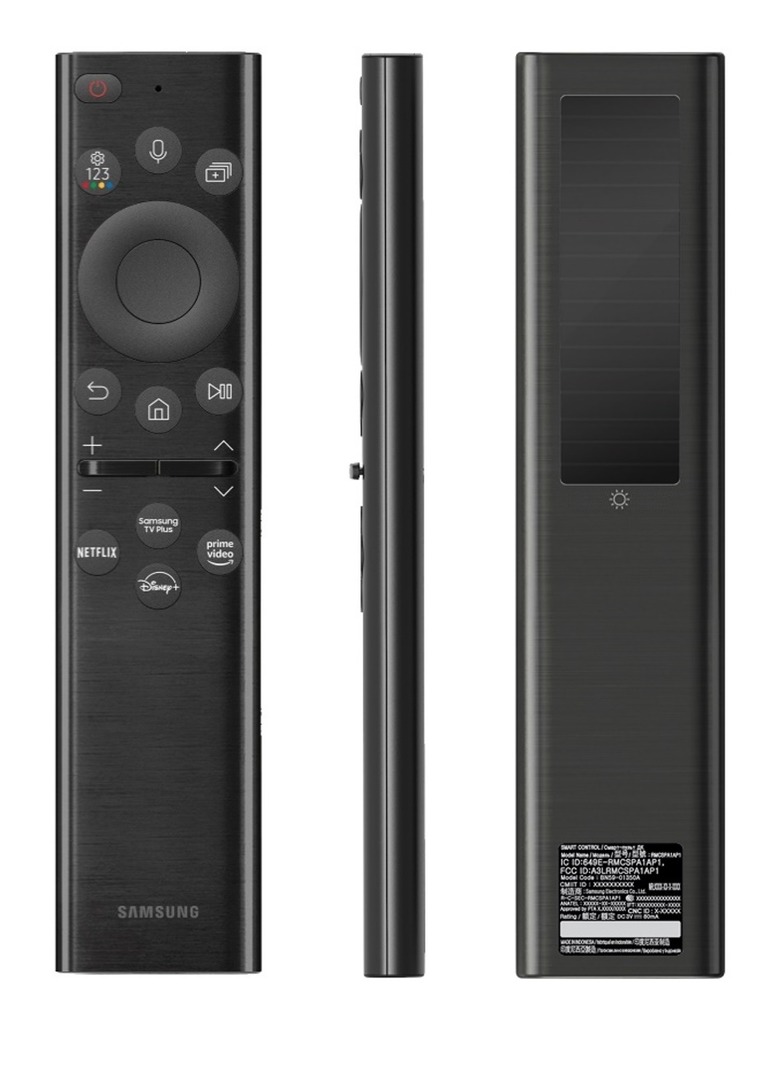Samsung's Greener TV Remote Charges From Your WiFi (But NFTs Could Spoil Things)
Samsung already ousted battery replacements from its Eco Remote, adding a solar panel last year, and now it's upgrading the 2022 model with the ability to harvest energy from radio waves in the home. The 2022 Samsung Eco Remote can still be charged up by leaving it in direct light, but it'll also use RF energy from a WiFi router or other wireless source, too.
RF energy harvesting sounds a little like low-key magic, but it's actually a fairly well established technology. It relies on converting electromagnetic energy – such as that generated by your WiFi router or other devices – into DC energy, which smaller electronics can then use.
The amounts we're talking about here are relatively low, but then again so are the power demands from a remote control. Samsung hasn't said just how long the 2022 Eco Remote might last when supplied with RF energy alone, but the combination of solar and RF harvesting should mean far fewer occasions where you reach for the clicker and find it flat.

For the 2022 update, meanwhile, there's also an aesthetic change. Samsung will now be offering a white version of the remote alongside the black, to better match some of its lifestyle TVs. In addition to a D-pad, volume, voice control, and other shortcuts, there are dedicated launcher buttons for key on-demand services: Samsung TV Plus, Netflix, Amazon Prime Video, and Disney+.
It's part of an ongoing push by Samsung – and others – to trim wastefulness, particularly in accessories and packaging. The new remote uses a super-capacitor or SuperCap, for example, rather than a battery, and all of the 2022 TVs have a cut in power consumption.
For packaging, there's now a greater use of recycled materials. The EPS cushions, plastic bands, clips, stand bags, and box holders are all now made from recycled cardboard and plastic, and there are no staples to hold the boxes themselves together. That's not just good news for the environment, either: Samsung says that by doing away with the metal fasteners, it can now assemble a TV box in just 1 second, as opposed to 5 seconds using the old system.

If there's a downside, it's that Samsung's efforts to trim waste and power consumption on the one hand could be undone by its push into NFTs on the other. Non-fungible tokens are fashionable – if often misunderstood – these days, and Samsung is building an NFT Aggregation Platform into its 2022 TVs. That'll have an explorer and marketplace aggregator, so that users can browse through the NFT art on offer, read up on the background, purchase them, and then have the TV automatically adjust its settings to display them at their best.
Unfortunately, there's still no real way around the power demands that NFT art involves, particularly when it comes to mining the cryptocurrency typically used to pay for it. CrytpoArt.wtf, a website which estimated the sort of energy consumption involved in some high-profile NFT art sales, found in analysis of 18,000 NFTs that, on average, they have a carbon footprint equivalent to more than a month's electricity use for a person living in the European Union. The site was taken down after being "used as a tool for abuse and harassment," creator Memo Akten said.
